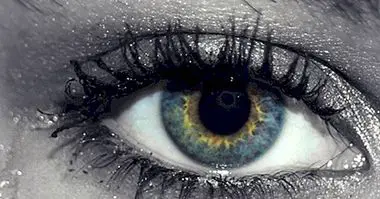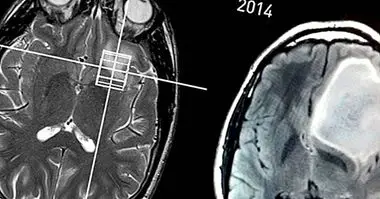"Cotard syndrome": living people who believe they are dead
It is quite common to think that people interpret reality only from the data that reach us directly through the senses. According to this point of view, when we see a rectangular body whose corners descend four extensions we arrive at the conclusion that what we are looking at is a table, as long as we have learned that concept before.
The same would happen with landscapes, people and animals: we would perceive each one of these physical elements through our senses and we would identify them automatically , in a clean and predictable way, as long as there is no lack of data. The truth is that, although most of the time there is a very clear relationship between the raw data that enters us through the senses and what we interpret to be real, this is not always the case. The stranger Cotard syndrome It is a sample of it.
What is Cotard Syndrome?
Cotard Syndrome is a mental disorder in which the subject he perceives himself as something that, in a way, does not exist or is separated from reality. People with this syndrome are able to sense their own body (for example, they can see themselves in a mirror, like all people without vision impairments) but they notice it as something strange, as if they did not exist. A significant amount of people with Cotard Syndrome, for example, they think they are dead, literally or figuratively , or be in a state of decomposition.
Although this symptom picture can be called nihilist delirium , has nothing to do with the philosophical or attitudinal positioning of the person. Someone with Cotard Syndrome tends to sincerely believe that the plane of reality in which their body is located is not the same as the one in which their conscious mind is located, and acts accordingly.
What people with Cotard Syndrome experience is very similar to the way in which some people strongly influenced by a certain culture or religion can come to think about their body, the rest of people and the environment they inhabit; the difference is that people with the syndrome always perceive things, regardless of the context, because of a abnormal functioning of some of your brain structures .
The Cotard Syndrome is named after the French neurologist Jules Cotard, who at the end of the 19th century coined the term Denial Syndrome to describe the case of a woman who believed she was dead and had all internal organs rotted. This person, believing that he was suspended at some point between Heaven and Hell, did not think it necessary to eat, since the planet Earth had lost all its meaning for her.
The fundamental idea is derealization
The concept of derealization implies the idea of perceiving the data that reaches us about the environment as something alien to the reality of those who perceive them . You can experience something similar, for example, if you are in a room with low light you place one of your hands before your eyes. You will see the silhouette of one of the parts of your body, which is something that you have already memorized throughout your life, and you will notice that their movements correspond to the ones you want them to do. However, the darkness can make that, although all the data you have about the hand correspond to those that you associate with your own body, you have the feeling that the hand is not yours or is dissociated from you in some aspect.
Something like this is what people with Cotard Syndrome live on: all the sensory information about themselves and the environment seems to be in order, but in spite of that the feeling persists that none of that has any meaning or is unreal. In addition, this delirium is broad enough to be able to take different ways of manifesting . Some people believe that they are dead, others have the feeling of being immortal, and there are even cases of patients who only perceive some parts of your body as something strange or that is decomposing.
Causes of Cotard Syndrome
Cotard Syndrome is complex in its manifestations and in its causes, which are found in the functioning of the brain. As we have seen, the information processing coming from outside is correct, what fails is the emotional response which should accompany this processing, since everything it has no meaning . Therefore, it is believed that the main root of the nihilistic delirium is found in the anomalous functioning of the part of the brain associated with the processing of emotions: the limbic system, at the base of the brain.
In any case, the Cotard Syndrome teaches us that the human brain performs very complex and varied tasks so that we can perceive and interpret reality comfortably. That this process is automatic and most of the times it goes well does not mean that any of these pieces can not fail, leaving us with eyes, noses and mouths that correctly inform about a world without meaning.
Bibliographic references:
- McKay R1, Cipolotti L. "Attributional style in a case of Cotard delusion". Conscious Cogn. 2007 Jun; 16 (2): 349-59. Epub 2006 Jul 18.
- Young AW1, Robertson IH, Hellawell DJ, from Pauw KW, Pentland B. "Cotard delusion after brain injury". Psychol Med. 1992 Aug; 22 (3): 799-804.



















